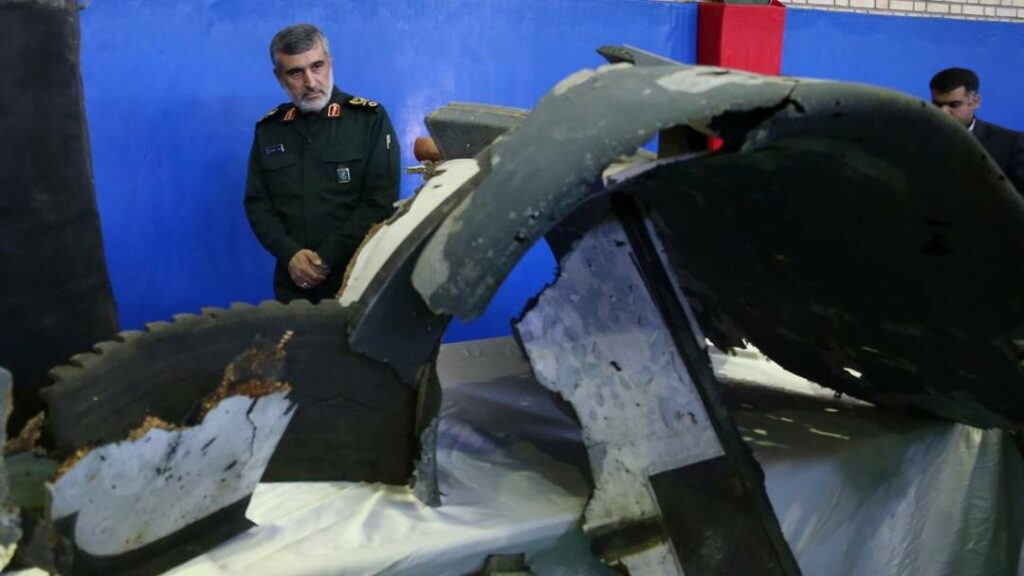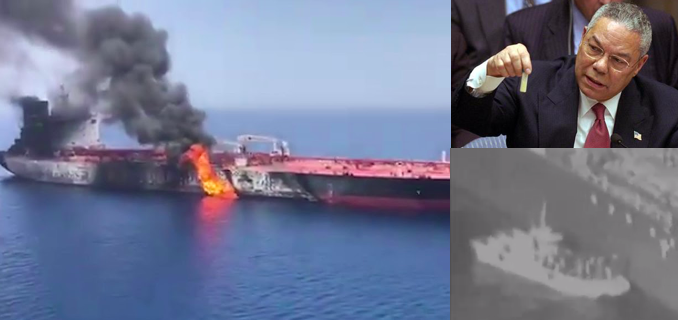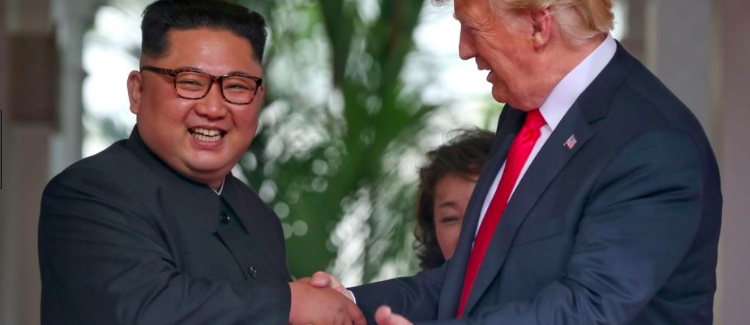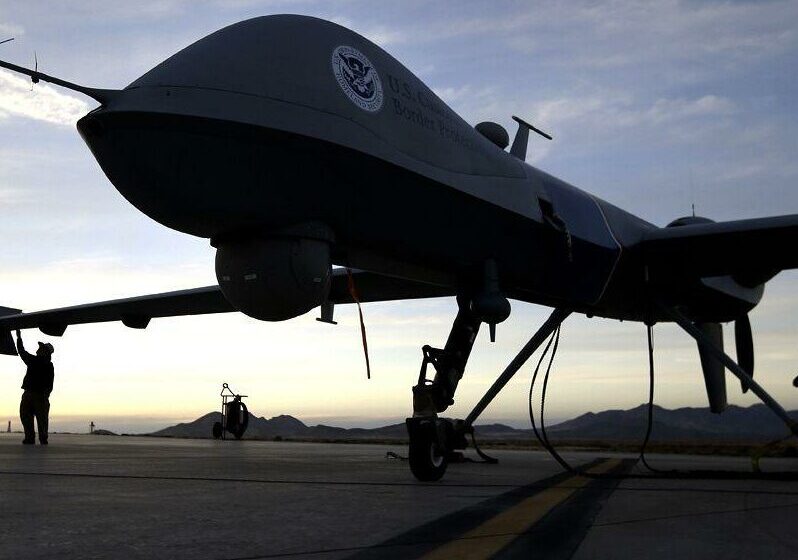
President Trump’s policy of “maximum pressure” on Iran has generated Tehran’s policy of “tit for tat,” and the results worry the world. Drones downed. Tankers seized. Insults exchanged. Yet both countries say—and act—like they don’t want a shooting war. Iran’s Supreme Leader Ayatollah Khameini said in May, “We don’t seek a war and neither do they.” Trump ordered an aerial attack on Iran and called it off. Instead, both sides have mobilized their intelligence alliances to harass and demonize the enemy. Fears of miscalculation and “false flags” are mounting. The United States and Iran are not at war, but their intelligence services are.
Behind the Iran headlines are multiple secret agencies, acting individually and collectively. The CIA, it is reliably reported, works with Israel’s Mossad, on dirty tricks from assassination to the Stuxnet virus. Mossad chief Yossi Cohen is an unofficial emissary of Prime Minister Bibi Netanyahu to the Gulf monarchies that fear Tehran. The Saudis use Israeli spyware to surveil and harass critics of Crown Prince Mohammed Bin Salman.
In Washington the CIA’s finding last November that MBS ordered the killing of a U.S.-based journalist Jamal Khashoggi has been ignored in service of facilitating the anti-Iran campaign. Now the agency’s Iran Mission Center is headed by Michael D’Andrea, a career undercover officer and convert to Islam, known for his involvement in torture, drone wars and hostility to Iran. There’s no reason to think Director Gina Haspel isn’t doing the maximum for Trump’s maximum pressure policy.
At the same time, Iranian intelligence is emboldened. Iran has benefited from the overthrow of Saddam Hussein in Iraq. Since 2014, the Islamic Revolutionary Guard Corps (IRGC), Iran’s foreign intelligence and special operations service, has cultivated allies in Baghdad and Damascus by helping drive ISIS out the region’s population centers. Inside Iran, the Ministry of Intelligence and Security actively and viciously suppresses Iranian civil society while regularly boasting of breaking up CIA spy rings. (On at least one occasion, CIA sources admit the Iranians succeeded.) All the while, the IRGC claims its drones are shadowing American ships.

Diplomacy is defunct, for the moment. Yet for all the hype about Iranian aggression, the Iranians’ response has been defensive and limited. Trump’s dispatch of 500 additional troops to Saudi Arabia is a pat on the back for MBS, not a significant military deployment. The leaders in Washington and Tehran prefer to spar via social media and test each others limits in the Persian Gulf and more covert realms.
Are the tit for tat exchanges a prelude to a shooting war? Or are they a substitute for a full-blown war? While the possibility of miscalculation is real, it is also possible that the unstable status quo will become “normal,” and not give way to war. The Iranians, as the weaker party, have every reason to prefer “asymmetric warfare” to open combat. The United States, weary of two failed crusades in the Middle East, has plenty of incentive to avoid a shooting war, even as Trump seeks to punish the country with sanctions.
Covert action entices national policymakers because it offers a path of action that is more aggressive than diplomacy without the costs of war. While Washington pundits fear “another Iraq,” the conflict between Washington and Iran might also devolve into the sort of hybrid war seen in Ukraine in 2013, in which paramilitary clashes and propaganda campaigns proliferated but never culminated in full-blown armed conflict.
Relying on intelligence services, not uniformed armed forces, preserves flexibility for both sides. The Iranians can play for time by attacking U.S. allies, not the United States. After Iran seized a British tanker, Britain’s foreign minister responded it was not contemplating military action and expressed hope that the United States would return to the nuclear deal. By relying on the CIA and Special Operations Command, Trump can reap the benefits of talking tough with Iran without the political costs of being a war-time president.

The president clearly prefers media spectacles to life and death decisions. He lost interest in Venezuela, when he discovered what most outside observer said: there would be no quick U.S. victory. Nor will there be a quick victory in Iran. Just as Trump pivoted from “fire and fury” about North Korea’s nuclear arsenal to embracing a dovish negotiating track with Kim Jong-un, so he is positioned to pivot from “maximum pressure” to reopening negotiations with Tehran As ideological ally Tucker Carlson warned, if Trump breaks his promise to stay out of “dumb” Middle East wars, he will likely harm his 2020 reelection prospects. On the other hand, new talks with Iran could be portrayed as a victory, even if they accomplish nothing. The beleaguered Iranians say they prefer talks over war, so it could happen.
Back Story
Covert struggle is the norm in U.S.-Iranian relations. The struggle between the CIA and Iranian intelligence goes back to 1953 when the CIA and Britain’s MI6 mounted Operation Ajax to overthrow Iran’s democratically elected government. The country was ruled by the pro-American Shah for the next 25 years, with his security services crushing all opposition. When the Shah was deposed in 1979, the Iranians extracted their revenge, launching a war, via proxy forces, to drive the CIA out of the Middle East. In 1983 Iranian-backed forces bombed the U.S. Embassy in Beirut, killing a number of CIA employees. The following years, the Iranian-backed forces kidnapped the Beirut station chief and tortured him to death. Once a CIA playground, Iran became what the spies called “a denied area.”
Yet over the years both sides managed to contain the conflict. Iran’s revolutionary fervor cooled. After a punishing eight-year war in which Saddam Hussein, supported by Washington, launched deadly chemical attacks, Iran was forced to sue for peace in 1998. After Saddam invaded Kuwait in 1990 and was forcibly ejected by an U.S.-led international coalition, he became the primary target of Washington, and Iran lost its place as public enemy number one in the American mind.
Since 1996, the Iranians have not been credibly linked to any terrorist attacks on U.S. targets, according to a 2017 Congressional Research Service study. (In 2011 two Iranians were charged with plotting the assassination of the Saudi ambassador in Washington, and one was convicted. The Iranian government denied involvement.)
[See my piece in The New Republic: “The Growing Obsession With Linking Iran to Terrorism”]
Relations even improved slightly after 9/11. Iran, it is often forgotten, denounced the al-Qaeda attack and supported the U.S. invasion of Afghanistan to rout the Taliban. Iran opposed the U.S. invasion of Iraq and supported anti-American forces there. Yet the two countries shared a common enemy in the Salafist jihadists who regard the Shiia Muslism of Iran as heretics. When ISIS overran western Iraq in 2014, Shiite militia groups mobilized to fight the jihadist forces, with the open support of Iran. “IRGC advisers were often on the front lines with the militia groups they supported, and Qassem Soleimani, the commander of the IRGC’s elite Quds Force, was occasionally photographed on the battlefield,” intelligence reporter Mike Giglio recenty noted in the Atlantic. The 5,000 American troops in Iraq pursued the same goal: defeating ISIS.
Now that ISIS has been driven out of the region’s biggest cities and Washington is openly hostile to Iran, the IRGC is in a strong position in Iraq. Iran can use its Iraqi allies to rally local opinion against the United States or even to attack U.S. troops.
New Story
What’s new on the American side is the collaboration of Saudi Arabia and Israel intelligence. Until Crown Prince Mohammed bin Salman (MBS) took power in 2015, the Saudis rarely tried to project power outside of the kingdom. Now the Saudis stand accused of deploying use senior intelligence officers to kidnap and kill Khashoggi.
The Saudis once positioned themselves as guardians of the Palestinian national aspirations, and if they had contact with Israelis, they kept it very quiet. Now the Saudi are supporting Jared Kushner’s Middle East Development Project to buy peace by investing up to $50 billion in the West Bank. The plan that has attracted virtually no Palestinian support but it is popular in the Persian Gulf investing class.
Mossad has the same agenda, Yossi Cohen said at a conference in Israel earlier this month. “The Mossad has identified at this time a rare opportunity — perhaps the first in the history of the Middle East — to reach a regional understanding that would lead to an inclusive regional peace agreement.”
According to the Times of Israel, the Mossad chief said, “the opportunity comes from a shared interest with countries throughout the region in fighting Iran and Islamic terror groups, like the Islamic State, and from the close relations with the White House and the Kremlin.” In other words, Kushner’s “peace plan” and Mossad’s anti-Iran agenda seem to be two sides of the same coin.
Given the belligerent incoherence of Trump’s statements and the angry militance of Iran’s response, a full-blown war is a real possibility. But so is a limited hybrid war waged by rival intelligence services that know each other too well.



